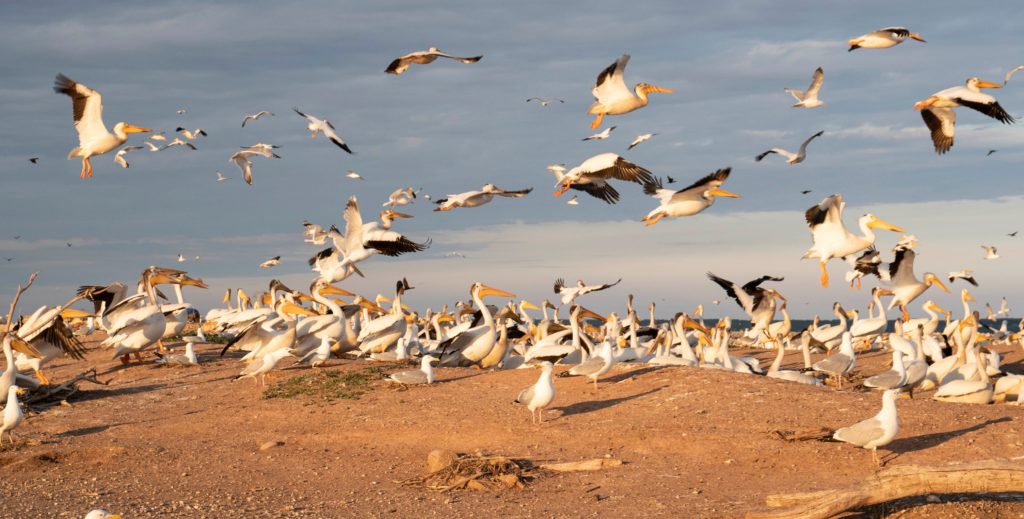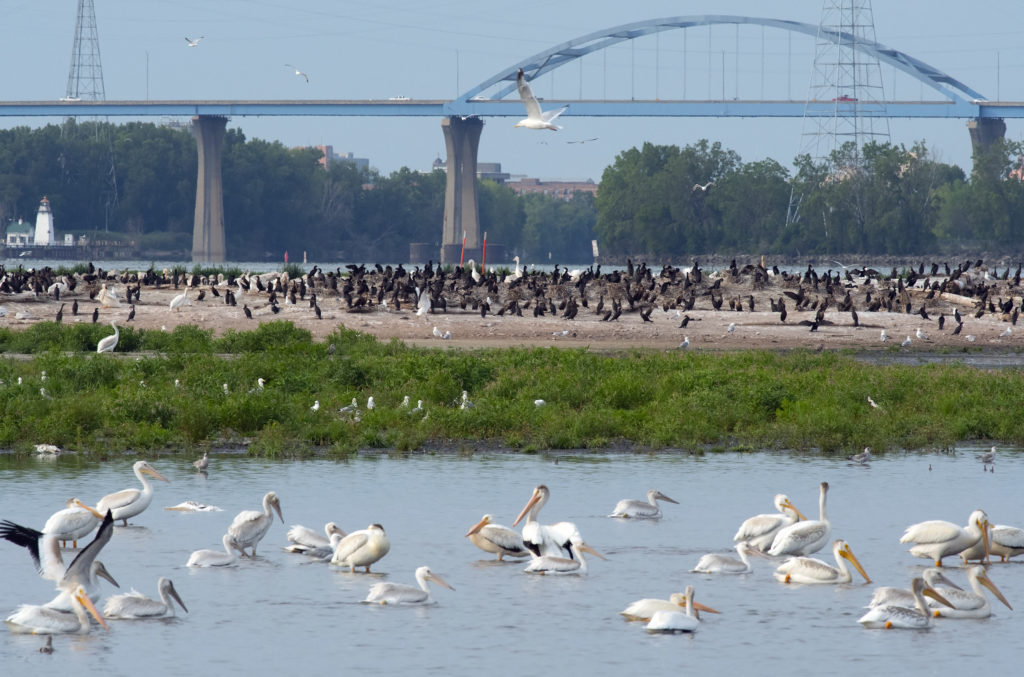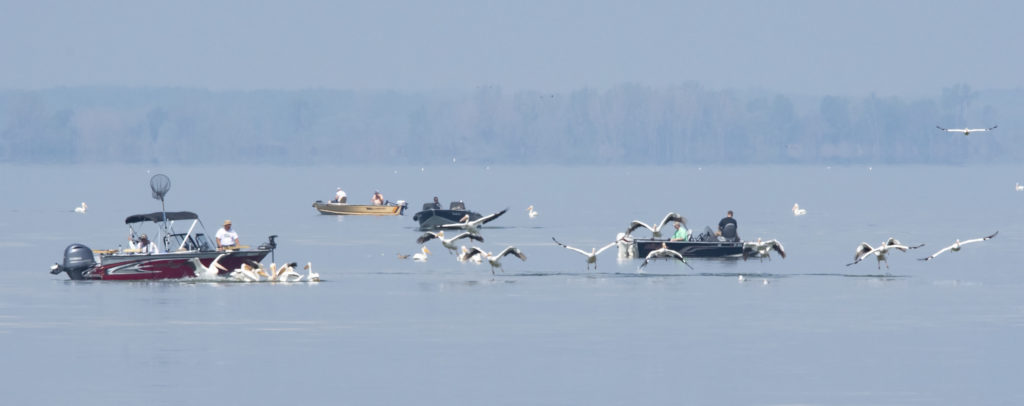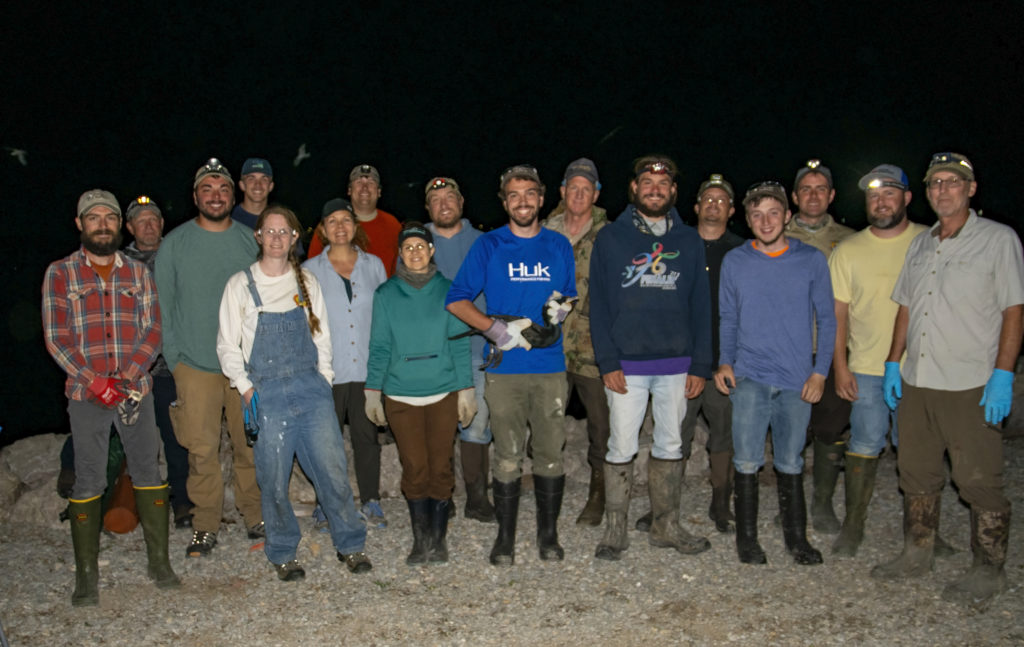Sea Grant impact in Green Bay: More than $8.8 million invested in research
Current outreach efforts focused on flood resilience, water quality enhancement and conservation
Wisconsin Sea Grant has provided Great Lakes research, education and outreach in the state since 1968 and in that time funded 91 Green Bay-focused research projects, investing more than $8.8 million. Some of the research was conducted by University of Wisconsin-Green Bay-based scientists. Other projects were undertaken by researchers from Lawrence University, St. Norbert College and University of Wisconsin schools based in Milwaukee, Madison and Stevens Point who came to the Lower Fox River-Green Bay.
In 1978, Sea Grant sited a field office in the culturally, recreationally and economically important Green Bay watershed. During a news event today, Sea Grant explored past research on topics such as contaminants, the Lake Michigan food web and water quality. It also reflected on its alignment with the Cofrin Center for Biodiversity at the University of Wisconsin-Green Bay, using that as a base from which to respond to local needs, which currently are centered on assisting communities in building flood resilience, enhancing water quality and fostering conservation of natural resources.
Speakers came from Sea Grant, and others who made comments were Green Bay Mayor Eric Genrich; Erin Giese, interim director of the Cofrin Center; and Nicole Van Helden, director of land conservation with The Nature Conservancy. Each speaker highlighted the value of collaborating to fulfill a commitment to what has been termed the world’s largest freshwater estuary, with the city of Green Bay sitting at its head.
At the Jack Day Environmental Educational Center at the mouth of the Fox River with the shining waters of Lake Michigan behind him, Sea Grant Director Jim Hurley said, “For more than 50 years, Sea Grant has embraced and activated a model of strong science to underpin decisions that serve the people of Green Bay and surrounding areas.” He continued, “We also look to the future when that kind of research investment will continue, along with the important science outreach our specialist based at UW-Green Bay, Julia Noordyk, provides on water quality and coastal community issues.”

Green Bay Eric Genrich is working with Sea Grant staff on addressing flooding issues in the East River watershed. Photo credit: city of Green Bay
“The city of Green Bay has benefitted tremendously from the close partnership that exists between city staff and UW Sea Grant,” said Mayor Genrich. “We’ve collaborated deeply on efforts to prevent flooding and develop neighborhood resiliency within the East River watershed, which is vitally important work to improve the quality of our natural resources and strengthen our community.”
Giese said, “We are excited to celebrate Sea Grant’s huge conservation successes over the years and are grateful to partner with them at Wequiock Creek Natural Area as we bring Indigenous voices back to the land. We are privileged to coordinate an annual tobacco blessing with Sea Grant and UW-Green Bay’s First Nations Studies.”
“We are so fortunate to have Wisconsin Sea Grant working in northeast Wisconsin,” said Van Helden. “They are an essential partner with local presence, expertise in both social and environmental science and an ability to make lasting, positive change. Our work together in the East River watershed is increasing local flood resiliency. Sea Grant staff member Julia Noordyk helped design the ongoing project and two key ingredients were, first, listening to the needs of the flood-impacted communities, then, creating knowledge-sharing opportunities to find flood solutions together.”
The event was also a part of the celebration of the University of Wisconsin-Madison’s 175th anniversary. Sea Grant is a program of the University of Wisconsin System, with its headquarters on the flagship campus. Sea Grant also has field offices at the UW-Green Bay, Manitowoc Campus, UW-Milwaukee and UW-Superior.
The post Sea Grant impact in Green Bay: More than $8.8 million invested in research first appeared on Wisconsin Sea Grant.
News Releases | Wisconsin Sea Grant
News Releases | Wisconsin Sea Grant
https://www.seagrant.wisc.edu/news/sea-grant-impact-in-green-bay-more-than-8-8-million-invested-in-research/?utm_source=rss&utm_medium=rss&utm_campaign=sea-grant-impact-in-green-bay-more-than-8-8-million-invested-in-research




